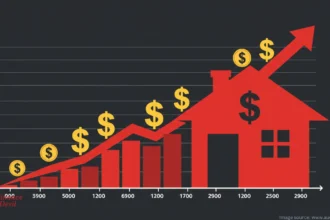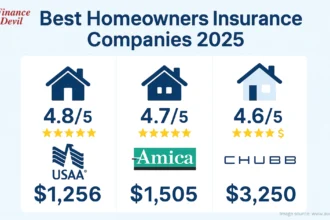
Young drivers in America face a harsh reality: auto insurance premiums that can cost thousands of dollars annually. With the average 16-year-old driver paying over $3,800 per year just to be added to a parent’s policy, many families are searching for ways to make insurance for youth more affordable without sacrificing essential protection.
The good news? There are proven strategies to significantly reduce these costs while ensuring adequate coverage for young drivers.
Why Insurance for Youth Costs So Much More
Insurance companies aren’t arbitrarily pricing young drivers out of the market. The statistics paint a clear picture of why insurance for youth commands premium pricing:
Crash Risk Statistics:
- Teen drivers are nearly 3 times more likely to be involved in fatal accidents compared to drivers over 20
- Drivers aged 16-20 have the highest crash rates of any age group
- Male teen drivers cause approximately two-thirds of fatal crashes in their age group
- Car accidents remain the leading cause of death for teenagers in the United States
Experience Factor: Insurance companies rely heavily on driving history to assess risk. Young drivers simply don’t have enough road experience for insurers to evaluate, forcing companies to base rates on statistical models that show higher claim frequency and severity among youth drivers.
Regional Variations: Location significantly impacts youth insurance costs. Montana leads as the deadliest state for teen drivers, with 9.5% of all fatal crash drivers being teenagers, followed by Utah at 8.4%. These statistics directly influence regional insurance pricing.
What Affects Insurance Rates for Young Drivers
Understanding the factors that influence insurance for youth helps families make informed decisions:
Age and Experience
- 16-year-olds: Pay the highest premiums (average $3,824 annually when added to parent’s policy)
- 17-year-olds: See modest decreases in rates
- 18-year-olds: Experience more significant savings as they approach adulthood
- 19-year-olds: Often qualify for young adult rates, reducing costs by up to 22%
Gender Impact
Insurance companies use gender as a rating factor in most states, with male teens paying approximately 13% more than female teens due to higher accident involvement rates.
Geographic Location
State-by-state variations are dramatic:
- Most expensive: Delaware ($5,461 annually), Nevada ($5,218), Rhode Island ($5,077)
- Least expensive: Hawaii ($278), Vermont ($466), Wisconsin ($458)
Vehicle Type
The car your teen drives significantly impacts premiums:
- Cheapest to insure: Subaru Forester, Honda CR-V, Mazda CX-5
- Most expensive: Sports cars, luxury vehicles, high-performance models
How to Compare Insurance for Youth: A Strategic Approach
Finding affordable insurance for youth requires systematic comparison shopping. Here’s how to approach it effectively:
Step 1: Determine Policy Structure
Family Policy vs. Individual Policy:
- Adding a teen to a family policy costs an average of $3,048 annually
- Individual teen policies average $4,866 per year
- Family policies save approximately $1,818 per year (37% less expensive)
Step 2: Research Top-Performing Companies
Based on comprehensive analysis, these insurers consistently offer competitive rates for youth:
| Company | Family Policy Average | Individual Policy Average | Key Advantages |
| GEICO | $601 | $935 | Lowest minimum coverage rates |
| Nationwide | $645 | $1,170 | Strong multi-driver discounts |
| Travelers | $657 | $947 | Comprehensive discount programs |
| State Farm | $699 | $781 | Excellent individual policy rates |
| USAA* | $259-$339 | $134-$339 | Military families only |
*USAA availability limited to military servicemembers and their families
Step 3: Evaluate Coverage Options
Don’t sacrifice essential protection for lower premiums. Consider:
- Liability coverage: State-required minimums may not provide adequate protection
- Comprehensive and collision: Essential for newer vehicles or those with loans
- Uninsured motorist protection: Critical, given the high number of uninsured drivers
Proven Tips to Lower Youth Insurance Costs
1. Maximize Available Discounts
Insurance companies offer numerous discounts specifically designed for young drivers:
Academic Performance Discounts:
- Good student discount: 10-25% savings for maintaining B average or higher
- Requires GPA verification through transcripts or report cards
- Available at most major insurers
Education-Based Discounts:
- Driver’s education completion: 5-15% savings
- Defensive driving course completion: Additional 5-10% savings
- Safe driving app participation: Up to 20% savings based on monitored behavior
Student-Specific Discounts:
- Away-at-school discount: 10-25% savings for students attending college 100+ miles from home
- Distant driver discount: For students who don’t regularly use the insured vehicle
2. Strategic Vehicle Selection
Choose vehicles that minimize insurance costs:
- Prioritize safety ratings over performance
- Avoid luxury or high-performance vehicles
- Consider used vehicles with lower replacement costs
- Research insurance costs before purchasing any vehicle
3. Policy Structure Optimization
- Keep vehicle titles in parents’ names when possible
- Specify which family member drives which vehicle to avoid automatic assignment of teens to expensive cars
- Consider dropping comprehensive/collision coverage on older vehicles with low resale value
4. Usage-Based Programs
Many insurers offer telematics programs that monitor driving behavior:
- Benefits: Potential savings of 10-30% for safe driving
- Monitoring factors: Speed, braking patterns, time of day, mileage
- Popular programs: State Farm Steer Clear, Allstate teenSMART, Progressive Snapshot
Critical Mistakes to Avoid When Choosing Youth Insurance
1. Choosing Minimum Coverage Only
While tempting for cost savings, minimum liability coverage may not provide adequate protection. Consider the financial impact of a serious accident and choose coverage limits that protect your family’s assets.
2. Not Shopping Around Annually
Insurance rates change frequently, and companies regularly adjust their pricing models. Compare quotes from at least three different insurers every 12 months.
3. Ignoring Available Discounts
Many families miss out on significant savings by not asking about all available discounts. Create a comprehensive list and verify eligibility with each potential insurer.
4. Focusing Solely on Price
The cheapest policy isn’t always the best value. Consider:
- Claims handling reputation
- Customer service quality
- Financial stability ratings
- Coverage adequacy
Insurance Companies Comparison: Youth-Focused Analysis
GEICO: Best Overall Value
Strengths:
- Consistently lowest rates for family policies
- Strong online platform appealing to tech-savvy teens
- Multiple discount opportunities
- Excellent customer satisfaction ratings
Considerations:
- Limited local agent availability
- Claims processing can be slower during peak periods
State Farm: Best for Individual Policies
Strengths:
- Lowest individual policy rates for most age groups
- Extensive agent network for personalized service
- Comprehensive discount programs
- Strong financial stability
Considerations:
- Family policy rates slightly higher than competitors
- May require more documentation for discounts
USAA: Best for Military Families
Strengths:
- Significantly lower rates than civilian-focused insurers
- Exceptional customer service
- Military-specific benefits and understanding
- Comprehensive coverage options
Considerations:
- Eligibility restricted to military families
- Limited physical locations
When to Add Youth to Your Insurance Policy
Understanding timing requirements prevents coverage gaps and potential legal issues:
Learner’s Permit Stage
- Most insurers don’t require adding teens with learner’s permits
- Coverage typically provided through “permissive use” provisions
- Verify coverage details with your current insurer
Licensed Driver Stage
- Must add teen immediately upon receiving full driver’s license
- Coverage must be effective on the license issuance date
- Some insurers offer better rates for early addition
College and Beyond
- Students can often remain on family policies while attending school
- Distance from home may qualify for additional discounts
- Marriage or permanent relocation typically requires separate coverage
Financial Planning for Youth Insurance Costs
Budgeting Strategies
Annual Cost Planning:
- Family policy addition: Budget $2,500-$4,000 annually
- Individual policy: Budget $3,500-$5,500 annually
- Consider payment plans to spread costs throughout the year
Cost-Reduction Timeline:
- Ages 16-17: Focus on discount maximization and safe driving
- Ages 18-19: Expect gradual rate decreases
- Age 20+: Significant rate improvements typically begin
Long-term Considerations
Building Insurance History:
- Maintain continuous coverage to establish favorable history
- Avoid claims when possible to preserve clean record
- Document all safety courses and academic achievements
State-Specific Considerations for Youth Insurance
High-Cost States
Delaware, Nevada, Rhode Island: Focus on maximum discount utilization and consider higher deductibles to reduce premiums.
Michigan, Connecticut, Utah: Research state-specific insurers that may offer better rates than national companies.
Moderate-Cost States
Texas, Florida, California: Leverage competitive markets by comparing multiple insurers and negotiating based on competitor quotes.
Low-Cost States
Hawaii, Vermont, Wisconsin: While rates are lower, still compare options to ensure adequate coverage and service quality.
Technology and Youth Insurance
Telematics Programs
Modern insurance leverages technology to offer personalized pricing:
- Smartphone apps monitor driving behavior in real-time
- Plug-in devices track vehicle usage patterns
- Potential savings range from 10-30% for safe drivers
Digital Management Tools
- Mobile apps for policy management and claims reporting
- Online portals for document access and payment processing
- 24/7 customer service through digital channels
Future Trends in Youth Insurance
Emerging Developments
Usage-Based Insurance Expansion:
- More sophisticated monitoring capabilities
- Personalized pricing based on individual risk profiles
- Integration with vehicle safety systems
Regulatory Changes:
- Some states considering age-neutral pricing
- Enhanced focus on actual driving behavior vs. demographic factors
- Potential federal oversight of insurance practices
Expert Recommendations for Families
Financial Planning Perspective
According to PV Viswanath, Graduate Program Chair in the Department of Finance and Economics at Pace University: “Car insurance is an expensive purchase, but it may be reduced by keeping teens on their parent’s policy rather than having their own policy. Part of the reason is you are effectively purchasing in bulk. Most insurance firms also offer a good student discount, providing another reason for teens to do well in school.”
Implementation Strategy
- Start early: Begin researching options 3-6 months before your teen gets licensed
- Document everything: Maintain records of grades, completed courses, and safe driving milestones
- Review annually: Insurance markets change rapidly; regular review ensures continued value
- Prioritize safety: The best insurance savings come from avoiding accidents entirely
Taking Action: Next Steps for Families
Insurance for youth doesn’t have to break the family budget. By understanding the factors that influence pricing, leveraging available discounts, and making strategic decisions about coverage and vehicle selection, families can significantly reduce their insurance costs while maintaining essential protection.
The key is starting early, staying informed about available options, and regularly reviewing your coverage to ensure it continues meeting your family’s needs at the best possible price.
Remember: insurance rates change daily, and the best deal available today may not be available tomorrow. Take action now to secure the most affordable coverage for your young driver.
Frequently Asked Questions About Insurance for Youth
What is the average cost of car insurance for teenagers?
The average cost varies significantly by age and policy structure. Adding a 16-year-old to a family policy costs approximately $3,824 annually, while an individual teen policy averages $4,866 per year. Costs decrease as teens age and gain experience.
Can a teenager get their own car insurance policy?
Teenagers under 18 typically cannot legally sign insurance contracts independently and require a parent or guardian to co-sign. However, adding them to a family policy usually provides significant cost savings compared to individual coverage.
Which insurance companies offer the best rates for young drivers?
GEICO, Nationwide, and Travelers consistently offer competitive rates for youth insurance. State Farm provides excellent individual policy rates, while USAA offers the lowest rates overall but is limited to military families.
How much can good grades save on youth insurance?
Good student discounts typically provide 10-25% savings on insurance premiums. Most insurers require maintaining at least a B average or 3.0 GPA, with some requiring verification through transcripts or report cards.
When should I add my teenager to my car insurance?
You must add your teenager to your policy immediately when they receive their full driver’s license. Coverage must be effective on the license issuance date to ensure legal compliance and continuous protection.
Do I need to add my teen when they get a learner’s permit?
Most insurers don’t require adding teens with learner’s permits since they’re typically covered under permissive use provisions while driving with licensed adults. However, verify coverage details with your specific insurer.
How does vehicle choice affect youth insurance costs?
Vehicle selection significantly impacts insurance costs. Safe, reliable vehicles like the Subaru Forester or Honda CR-V typically have lower insurance costs, while sports cars, luxury vehicles, or high-performance models increase premiums substantially.
What discounts are available for teen drivers?
Common discounts include good student (10-25%), driver’s education completion (5-15%), defensive driving courses (5-10%), away-at-school (10-25%), and safe driving app participation (up to 20%). Availability varies by insurer.
Should I consider usage-based insurance for my teen?
Usage-based or telematics programs can provide significant savings (10-30%) for safe teen drivers. These programs monitor driving behavior and reward safe habits, making them particularly beneficial for responsible young drivers.
How long can my teen stay on my insurance policy?
Teens can typically remain on family policies while living at home or attending school. Marriage, permanent relocation, or purchasing their own vehicle usually requires separate coverage, though specific rules vary by state and insurer.
In another related article, Best Car Insurance in Georgia: How to Save Up to 40% on Your Premium in 2025





